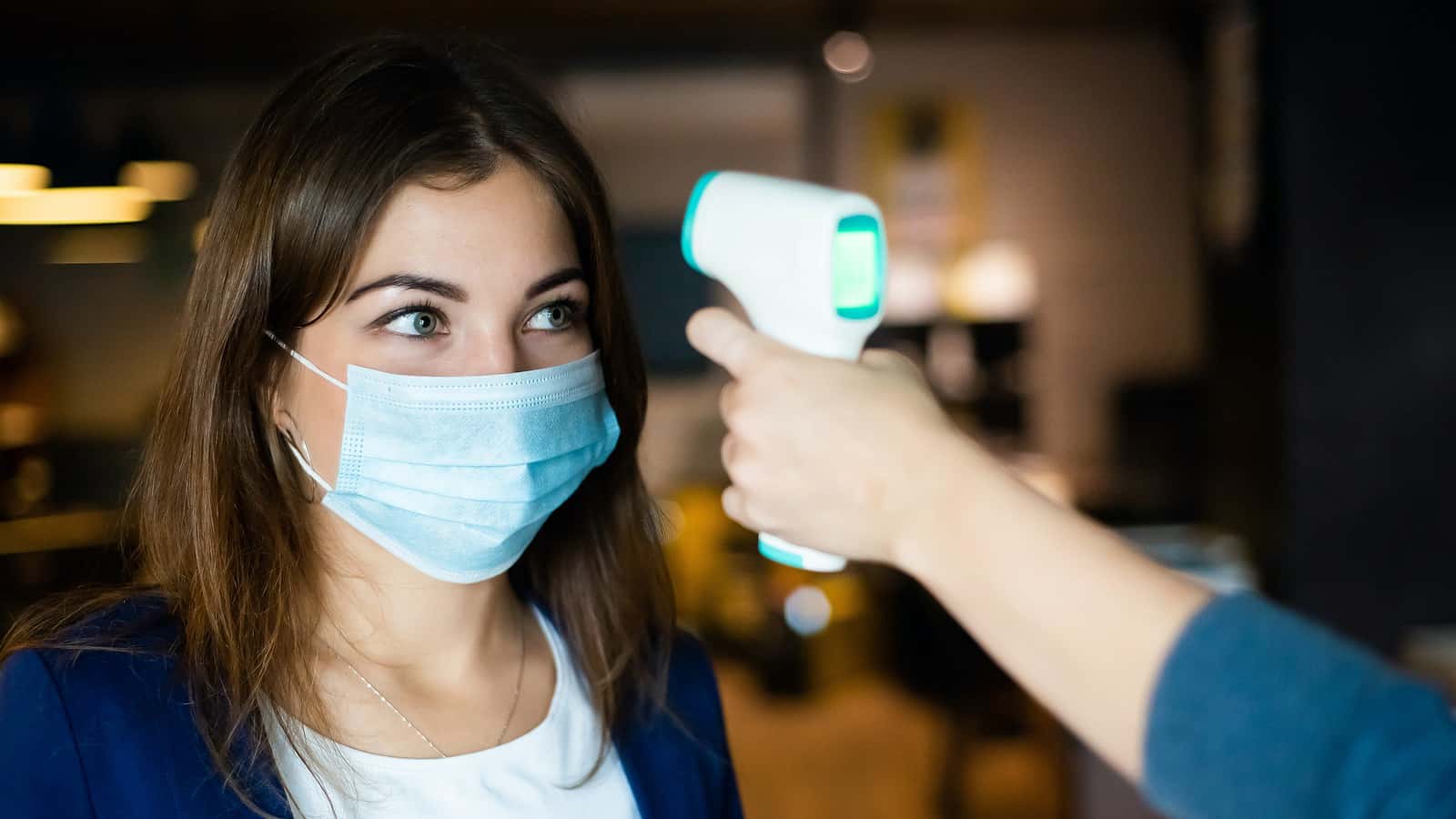
Last February, there were news clips of Chinese health workers pointing gun-like devices at peoples’ foreheads. No, they weren’t shooting travelers. They were just taking their temperatures. Now, touchless thermometers are everywhere. Airports, businesses and hospitals are using non-contact thermal temperature scanners to check for fevers. They are trying to determine who might have COVID-19. This reader wants to know if these devices can be trusted.
How Accurate are Touchless Thermometers?
Q. Whenever I go to the doctor’s office, a nurse weighs me, takes my temperature and measures my blood pressure. These days I really do not like them sticking a thermometer under my tongue, even in its little plastic sleeve.
How reliable are the touchless devices I have seen on news reports on television? Are they available to consumers?
A. The devices you are referring to are called non-contact infrared thermometers (NCITs). They detect infrared radiation coming off the human body and turn it into a digital signal.
A systematic review and meta-analysis of infrared thermal scanners was recently published in the Journal of Travel Medicine (Oct. 10, 2020). The authors reviewed 30 studies from 15 countries and concluded that handheld infrared thermometers were reasonably accurate and can safely be used for screening. They are not as good for babies and may not be as precise as oral thermometers.
In their own words:
“The results of this review suggest that non-contact infrared thermometers (NCITs) and thermal scanners generally have reasonable sensitivity and specificity for the diagnosis of fever.”
What Is the Definition of Sensitivity and Specificity?
You often read that a test has good sensitivity but only moderate specificity. What the heck is the difference? It turns out that sensitivity is the capacity of the test to accurately identify the condition under question.
Specificity is a measure of who does not have the disease being tested. Ideally, you want a test that correctly determines who has a disease and who does not.
So, how does the rapid influenza diagnostic test (RIDT) perform? A meta-analysis of 130 studies was not very encouraging (Annals of Internal Medicine, Sept. 19, 2017). The authors reported that these RIDTs had a pooled sensitivity of 54.4% for influenza A. They performed no better for detecting influenza B (sensitivity of 53.2%). One could conclude that such rapid tests missed about half the people with the flu.
In Japan, however, they use a different type of rapid influenza diagnostic test. There, they report that the sensitivity of the ImunoAce Flu test is 97.1% and the specificity is 89.2% (PLoS One, May 6, 2020). That’s way better than in the United States.
Part of the reason for such good results in Japan is:
“The reliability of rapid test results seems to be much higher in Japan than in other countries, because approximately 90% of influenza patients are tested and treated within 48 hours after the onset of illness, when the influenza viral load in the upper respiratory tract is high. From the Japanese experience, RIDTs are sufficiently sensitive and highly useful, if patients are tested within 48 hours after the onset of illness.”
Back to Touchless Thermometers:
The reviewers stated that touchless thermometers have “reasonable sensitivity and specificity for the diagnosis of fever.” That does not mean someone has COVID-19. It just means that they have an elevated temperature, which might be an indication of an infection.
Lots of things can influence the readings, though. The temperature in the room might be a factor. Direct sunlight can affect readings. Humidity also matters. Facial makeup can interfere with accurate measurements.
Bottom line: Don’t rely on temperature alone. People can spread COVID-19 before they have a fever or other symptoms.
Should you wish to find decent touchless thermometers, be prepared to spend about $30. There are many brands on the market, and they can be purchased online. Finally, remember that a moderate fever is the body’s way of fighting off infection. Here is a link to a podcast interview (Nov. 10, 2020) we conducted with a virologist and immunologist. He discusses the coronavirus and the role of temperature and the immune system.
Citations
- Aggarway, N., et al, "Diagnostic accuracy of non-contact infrared thermometers and thermal scanners: A systematic review and meta-analysis," Journal of Travel Medicine, Oct. 10, 2020, doi: 10.1093/jtm/taaa193

